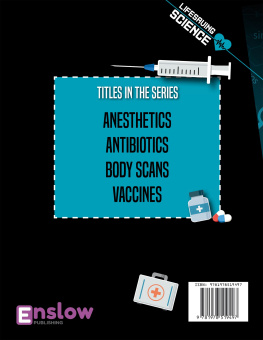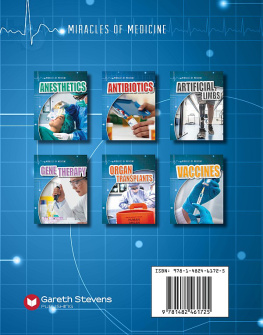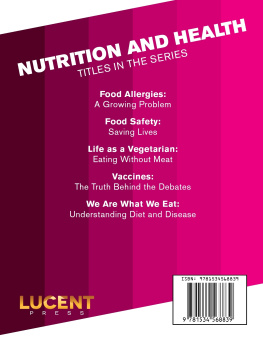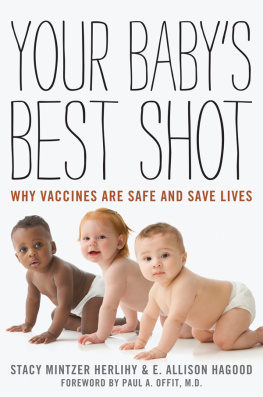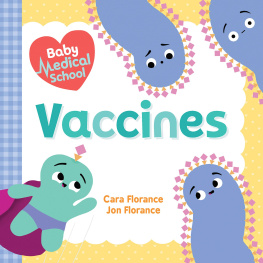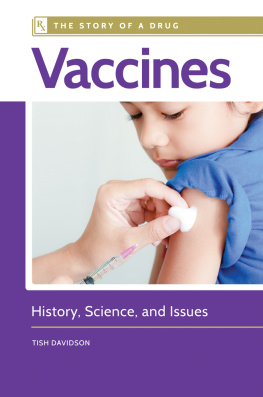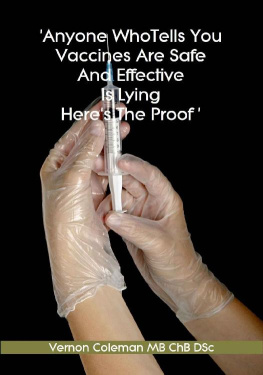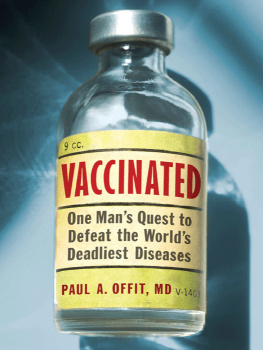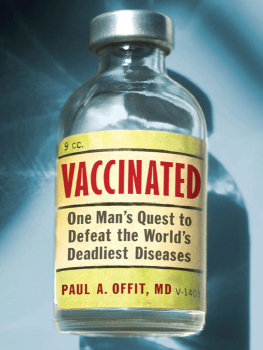
Published in 2021 by Enslow Publishing, LLC
101 W. 23rd Street, Suite 240, New York, NY 10011
2019 Booklife Publishing
This edition is published by arrangement with Booklife Publishing
All rights reserved.
No part of this book may be reproduced by any means without the written permission of the publisher.
Cataloging-in-Publication Data
Names: Brundle, Joanna.
Title: Vaccines / Joanna Brundle.
Description: New York: Enslow Publishing, 2021. | Series: Lifesaving science | Includes glossary and index. Identifiers: ISBN 9781978519473 (pbk.) | ISBN 9781978519497 (library bound) | ISBN 9781978519480 (6 pack)
Subjects: LCSH: Vaccines--Juvenile literature. | Vaccination--Juvenile literature.
Classification: LCC RA638.B78 2021 | DDC 615.372--dc23
Printed in the United States of America
CPSIA compliance information: Batch #BS20ENS: For further information contact Enslow Publishing, New York, New York at 1-800-542-2595

PHOTO CREDITS
Front Cover Valeriya Anufriyeva, Sylfida, vector toon, StudioAz, Leone_V.. With thanks to Getty Images, Thinkstock Photo and iStockphoto.
CONTENTS
THE WORLD OF MEDICINE
Every day, millions of people around the world suffer from minor and serious illnesses and receive treatment for them. They may have become infected with a disease, had an accident, or been admitted to the hospital for routine or emergency treatment. They are looked after by who have been trained to give the care they need. Patients rely on these professionals and the treatments they give to return them to full health. Sometimes medical problems are life-threatening, but a huge range of lifesaving medicines and treatments are available to health-care professionals to help them to prevent, find, and treat medical problems. Vaccines are an example of this kind of lifesaving miracle.

VACCINATIONS CAN SAVE YOUR LIFE.

ILLUSTRATION OF POLIO VIRUS
Polio is a disease that can lead to paralysis or death.
Since 1900, worldwide average life expectancy (the amount of time that a newborn baby is expected to live for) has more than doubled and is now over 70 years. Scientists are predicting that average life expectancy will eventually reach over 100 years in some societies. There are many reasons for this. Improved health care has been very important and vaccines have played a vital part. Their introduction has led to the prevention of many serious or deadly diseases. In many parts of the world, good health and health care are now accepted as normal parts of life, so it is easy to forget that this hasnt always been the case, and still isnt in some places. Diseases that can now be prevented easily and effectively by vaccines used to kill or permanently disable thousands of people every year. In this book, we will be taking a look at the discovery and development of vaccines and their lifesaving role in modern medicine.

CHICKENPOX RASH
WHAT ARE VACCINES?
Vaccines allow the body to have a trial run at fighting a disease, without the body actually being infected with the disease. A vaccine is a small amount of a safe version of the disease in a dead or weakened form. The vaccine is powerful enough to trick the body into thinking it has become infected, but not powerful enough to cause the symptoms of the disease.
FACT
DEAD FORM = INACTIVATED
WEAKENED FORM = ATTENUATED
THE INNATE IMMUNE SYSTEM

The immune system is made up of the that have invaded the body. Phagocytes (say: FA-guhsites) are white blood cells that wrap themselves around invaders, engulfing and destroying them. Natural killer cells are also white blood cells that kill invaders by injecting them with lethal toxins.
THE ADAPTIVE IMMUNE SYSTEM
The adaptive immune system is more complex and responds more slowly. Substances, called antigens, on the invading cells are identified and the body then produces an army of cells called antibodies. Antibodies are specifically designed or adapted to fight that particular antigen.
MEMORY CELLS

Whooping cough is also called pertussis, and is a disease that causes severe coughing followed by a whooping sound as the patient breathes in.
The first time the body comes into contact with a disease, it can take several days for the adaptive immune system to fight back. During that time, an illness, such as the whooping cough (say: hooping coff) virus may spread rapidly through the body and cause serious problems. The antibodies that the body produces eventually break down after the threat of the disease has passed, but some immune cells, called memory cells, remain in the body. If the body comes into contact with the same disease again, memory cells remember which antibody is needed to fight the disease. They then produce huge numbers of that antibody very quickly. By tricking the immune system into action, vaccines enable the body to produce memory cells, without the vaccinated person geting the disease itself. In the future, the body can fight back quickly against the same infection.

DISEASE AND HOW THE BODY RESPONDS
The human body is constantly in contact with , such as bacteria and viruses, that can cause disease if they enter the bloodstream or body tissues. Pathogens, which are often called germs, are found everywhere, such as in food, water, soil, and air. Although most diseases are caused by bacteria and viruses, some are caused by parasites and fungi. Diseases can be spread by coughs and sneezes, physical contact between people, and touching infected surfaces such as door handles and counters. Some diseases are carried in saliva and other body fluids.


Each antibody recognizes and binds only to a particular antigen.
As we have seen, antigens are found on the surface of bacteria and viruses. Antigens prompt the body to produce antibodies. The term antigen is short for antibody generators. Each antigen is different and each is attacked by a specific antibody. Antibodies also known as immunoglobulins (say: im-yoo-noh-GLAHB-yoo-lihns) are protective, Y-shaped proteins. Antibodies behave like sniffer dogs for the immune system, finding antigens and sticking to them. They are fitted with special that bind only to a particular antigen just as a puzzle piece clicks into the correct place and wont fit anywhere else. The part of an antigen to which an antibody attaches itself is called the epitope. The part of an antibody that recognizes and sticks to an antigen is called the paratope.
Next page
